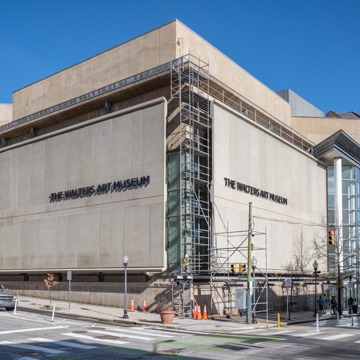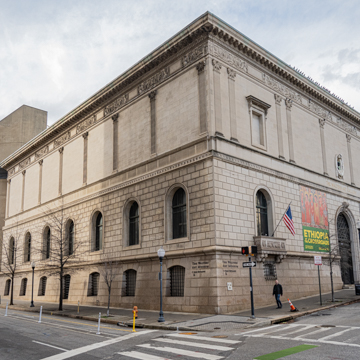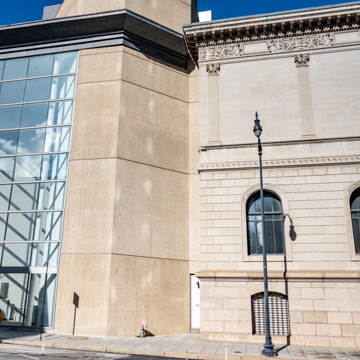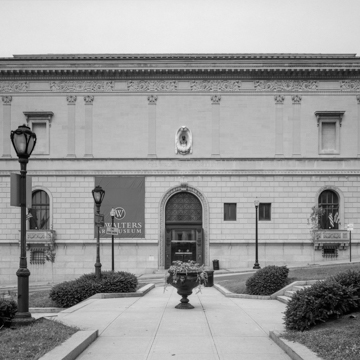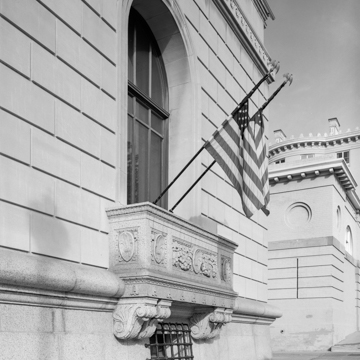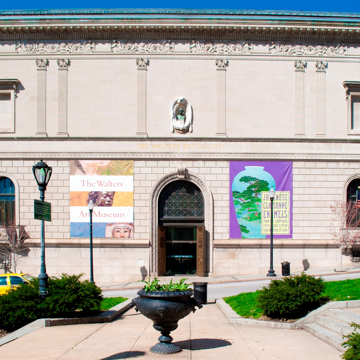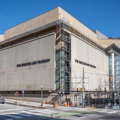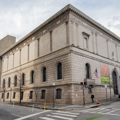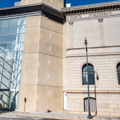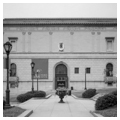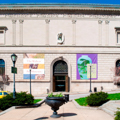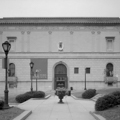The Walters is one of the architectural and cultural anchors of Mount Vernon Place. It is the legacy of philanthropist Henry Walters and his son William T. Walters, originating as their extensive personal collections of art and artifacts from around the globe. Emulating an Italian palazzo, the ashlar limestone building rises from a ground level of rusticated granite with blind windows with iron grilles contributing to its solid aura. The galleries are arranged around the sky-lit arcaded interior courtyard or Great Hall inspired by the seventeenth-century Collegio dei Gesuiti built for the Jesuits in Genoa, Italy.
The elder Walters began opening his house at 5 W. Mount Vernon Place for public viewings of his collection in 1874. In 1905, he hired designers and craftsmen to New York’s elite to create a purpose-built structure for his burgeoning collection. Four period rooms—Gothic, Francis I, Louis XIV, and Louis XVI—were the work of L. Marcotte and Company, and Durand et Compagnie of Paris created the reproduction furnishings. The museum opened in 1909, and upon his death in 1931 Henry Walters bequeathed his house, museum building, and collection to the city.
A contrasting Brutalist poured-concrete annex was erected in 1974; its high plinth-like foundation and incised horizontal patterns mimic the lines of the original building. A glass atrium entrance lobby with suspended stair was added at the juncture of the two parts.
References
Dilts, James D., and John Dorsey. A Guide to Baltimore Architecture. 3rd ed. Centreville, MD: Tidewater Publishers, 1997.
Price, Virginia. “The Walters Art Museum,” HABS No. MD-1209, Historic American Buildings Survey, National Park Service, 2005. Prints and Photograph Division, Library of Congress, Washington, D.C.


